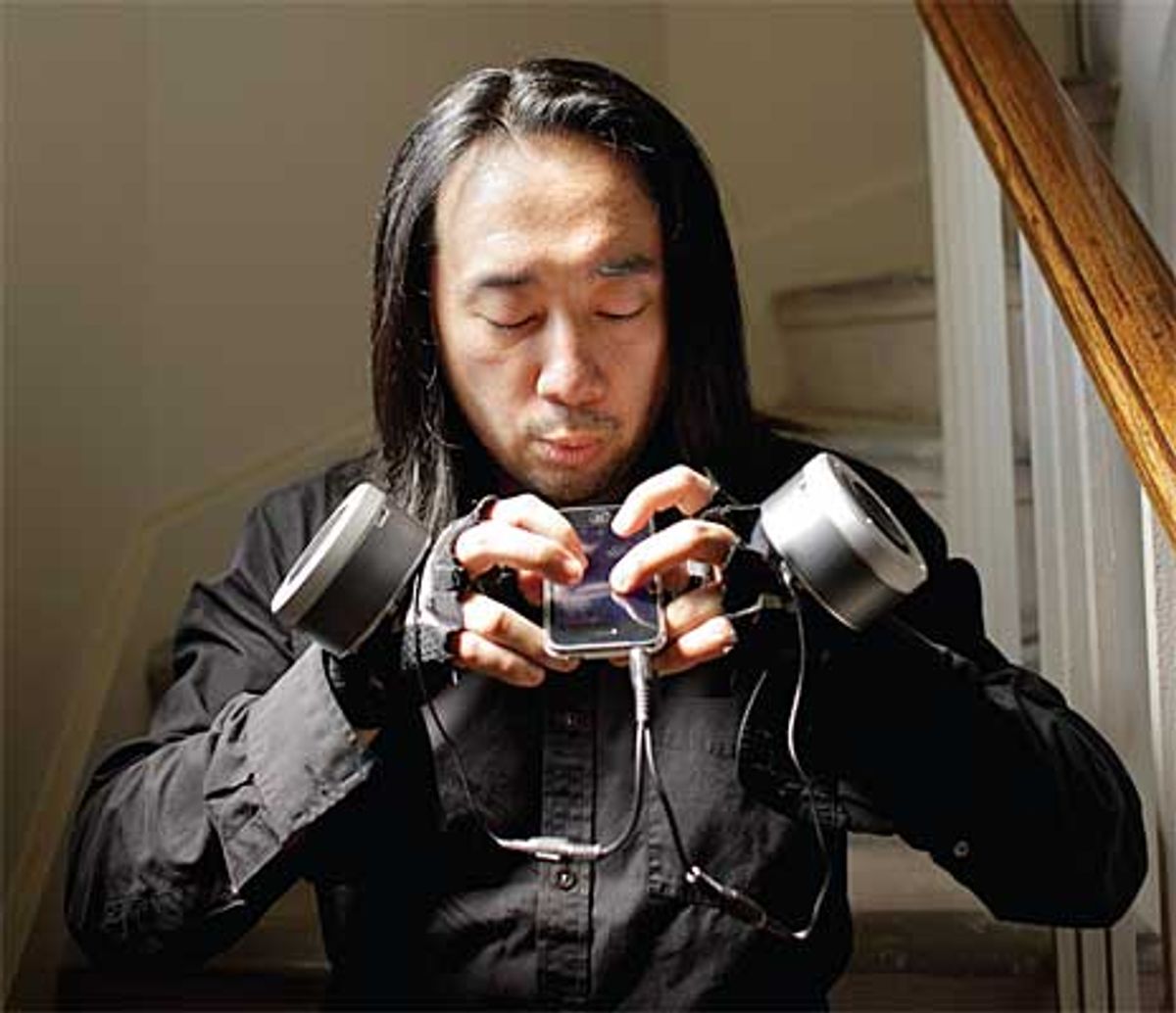Pied Piper:
Ge Wang’s iPhone app, which turns the phone into an ancient flute, has been downloaded a million times at US $1 each.
Not long ago, a kitchen mishap at a Palm Desert, Calif., dinner party caused an hour-long delay between the appetizer and the entrée. Conversation began to lag. Then folks began pulling out their iPhones—not to check their e-mail but to play Ocarina, a US $1 iPhone app that lets users blow into the phone’s microphone while pressing on virtual keys to mimic an ocarina, an ancient flutelike instrument.
Who would have thought of blowing into an iPhone to make music? Ge Wang, that’s who. Wang, an assistant professor at Stanford University, has made a career of turning computing devices into musical instruments.
Born in China, Wang was 9 when his parents brought him to the United States, where his father was working toward a degree in operations research at Georgia Tech. In time Wang picked up the accordion and guitar. When he matriculated at Duke University, in Durham, N.C., he thought about studying music. His father, however, suggested he pair that pursuit with something more practical.
So Wang majored in computer science and fit in as many music classes as he could. After hearing an electronic music piece by composer Paul Lansky, he finally saw how to merge his two interests. He spent six years as a graduate student at Princeton designing electronic instruments, working with the nascent Princeton Laptop Orchestra and developing ChucK, a programming language optimized for the creation of sound. In 2006, his professor and mentor, Perry Cook, told him it was time to graduate. ”It was the sensei saying to the student, ‘Go out into the world; you are ready,’” Wang says.
Wang landed at Stanford University’s Center for Computer Research in Music and Acoustics as an assistant professor, where he teaches courses like “Compositional Algorithms, Psychoacoustics, and Spatial Processing.” He also established the Stanford Laptop Orchestra and a mobile-phone orchestra and continues to work on ChucK. And in 2008 he joined with Ph.D. student Jeff Smith to start Smule, a company that develops iPhone applications.
“When the iPhone came along, I saw this miniature computer that’s portable, personal—even intimate—and pervasive,” he says. So when Smith came to him, already with investors ready to back the company (the seed round eventually totaled $1.7 million), he couldn’t say no.
Smule’s first iPhone app, introduced last September, was the Sonic Lighter, a virtual flame. As far as anyone knows, this was the first app to be controlled by the microphone. To blow out the flame, you blow into the mike. The app has another unique feature: global visualization—a map of the world that shows in real time where other people have Sonic Lighters lit. And sometimes that information is surprising.
“For many weeks,” Wang said, ”there was a point of light inside the Arctic Circle—we have no idea what it is, there is no visible land mass there—but there were six iPhones there using Sonic Lighters.” Wang theorizes that they belonged to workers on an oil rig.
The lighter led to Sonic Boom (a virtual firecracker), Sonic Vox (a “real-time voice shifter”), and then, last November, to Ocarina. It works just like a real ocarina: You cover “holes” on the display while blowing into the mike. The sound wave is computed on the fly—the sounds are not prerecorded—using information on the holes covered, the force of the air on the microphone, and the vibrato. Like the Sonic Lighter, Ocarina includes a map for global visualization. And besides seeing where people are playing the Ocarina, you can listen in.
Smule has sold over a million downloads of Ocarina and now has 15 employees. Its latest application, Leaf Trombone World Stage, combines the sound of blowing across a leaf with a slide to change the pitch, and it lets listeners judge users.
Meanwhile, Ocarina continues to serve as an icebreaker for strangers, provide a sound track for holiday parties, generate YouTube videos, and entertain bored dinner guests.

